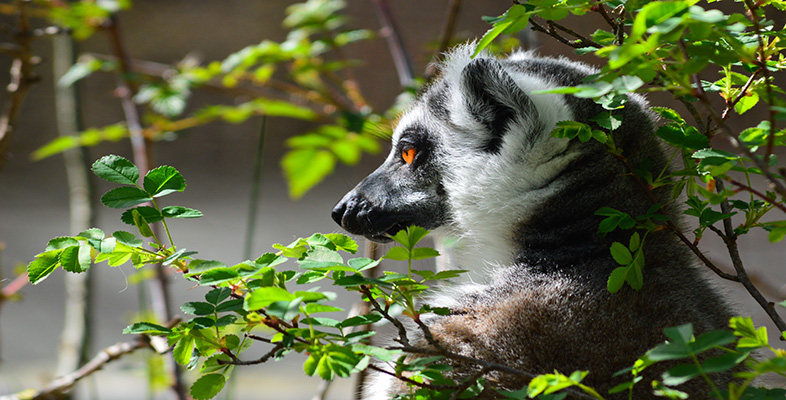5.6 Aye-ayes
Perhaps with good reason, the aye-aye has been dubbed by some 'the strangest of all primates' and LoM provides some of the reasons [p. 243]. Little wonder that, as DA points out, the species was first classified as a rodent like them, it has powerful incisor teeth that grow continuously.
Question 10
Can you detect any other rodent-like feature of the aye-aye skull?
Answer
It has a diastema between the prominent incisors and the small premolars and molars.
The photograph in LoM p. 242 shows the spectacular elongated finger, which is the key to its ability to locate and catch the insect larvae contained within bark.
Question 11
With what tree-dwelling mammal, mentioned at the beginning of this course, does the aye-aye show a remarkable degree of convergence?
Answer
The striped possum (Section 1) which, as a marsupial, is taxonomically about as far removed from the primates as possible. This animal too has an elongated (middle) finger, and it too taps on bark. But it's uncertain if this habit aids location, as with the aye-aye, or whether the aim is more simply to disturb insects hidden underneath.

Recently, it's proved possible using captive aye-ayes to investigate what cues the animal uses to locate buried insect larvae, in an attempt to distinguish between the alternatives suggested in LoM p. 243.
Question 12
Aye-ayes have been found to excavate cavities that contain no prey. What does this suggest about what triggers excavation?
Answer
That any 'faint rustling' of the type that DA refers to is not the trigger that prompts the aye-aye (in DA's words) to turn 'to carpentry'.
Question 13
Perhaps then the alternative suggestion holds - that echoes from the tapping digit might reveal 'like a human doctor percussing a patient' where the wood is hollow. How might this suggestion be experimentally tested?
Answer
By filling the type of cavity inhabited by a larva, say with foam or gelatin, so that it is no longer hollow.
When this experiment was done, the aye-aye was no less eager to excavate; varying the density of the filling material (in ways likely to alter the reverberation of sound) made little difference to the aye-aye's behaviour. So, neither of the suggestions in LoM seems supported by these experiments. What seems more likely is that aye-ayes excavate when they detect by sound any interface or fragmentation in the underlying wood - what the researchers call a 'break in the integrity of the wood'. Maybe the fair proportion of false alarms this tactic is likely to produce is offset by the fact that many wood-boring larvae are large and nutritious, providing a substantial payoff when located. Furthermore, the number of unrewarding cracks beneath the surface of tropical wood is rather less than might be expected. In the dead wood that often represents the aye-aye's hunting ground, the high humidity of the rainforest means that cracking in wood is less frequent. But the bigger question of exactly to what extent the aye-aye uses the result of its tapping to construct a 'picture' of what lies beneath the surface, is unknown.
